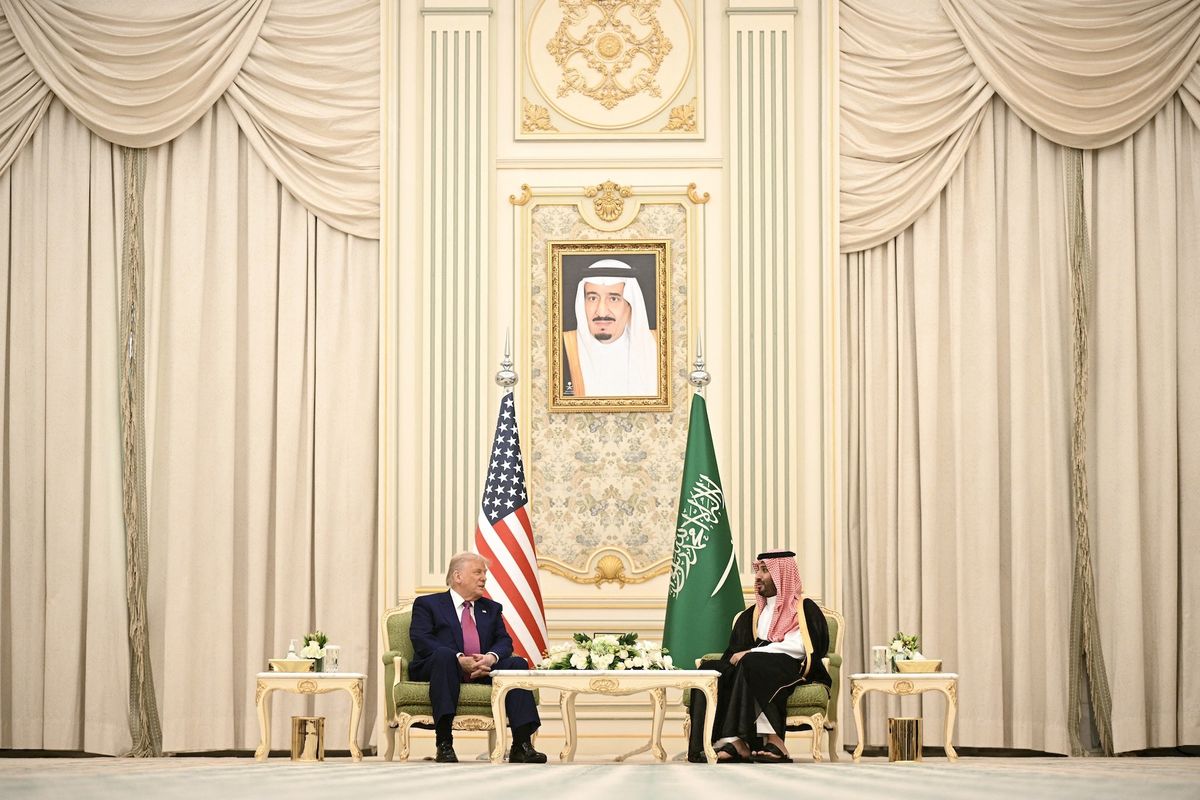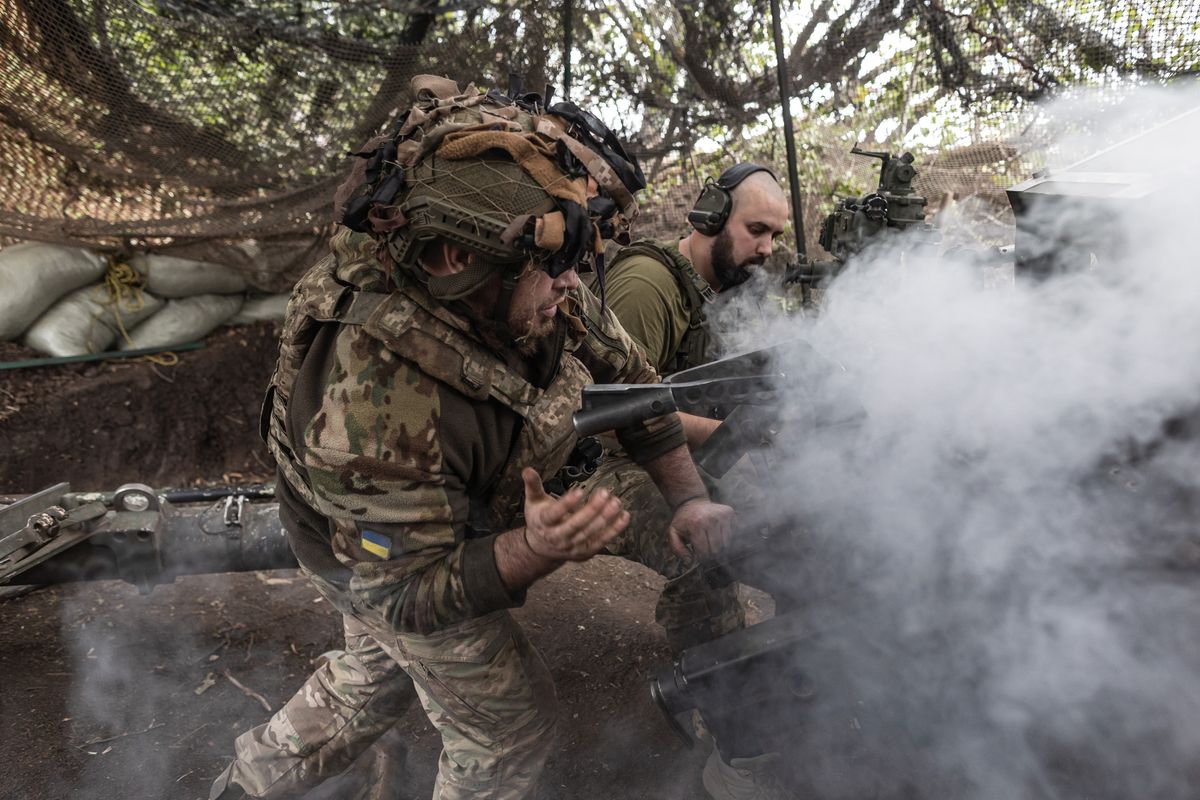CIPHER BRIEF REPORTING – Russia has been bombarding Ukrainian cities with massive aerial assaults, two days after U.S. President Donald Trump pledged to send more anti-missile weapons systems to Kyiv. Trump also issued an ultimatum of additional U.S. sanctions if Russian President Vladimir Putin fails to end his attacks and agree to a ceasefire within 50 days – as of Monday.
Amid the barrage of Russian attacks, experts note that the commitment of additional Patriot systems will allow Ukraine to defend itself but won’t do much to move the needle toward ending the war, unless Putin flinches at the threat of sanctions, which he has not done. “Ukraine was given just enough support not to lose against Russia under President Joe Biden, but never enough support to actually win and end this war,” writes former Chief of CIA’s Central Eurasia Division Rob Dannenberg in a piece exclusive to The Cipher Brief this week. Meanwhile, there are signs that President Trump’s patience is wearing thin.
The White House responded yesterday to the readout of a July 4 phone call between President Trump and Ukrainian President Volodymyr Zelensky that signaled the president’s interest in Ukraine’s ability to launch deep strikes on Russian territory. Sources familiar with the call said Trump asked Zelensky, “Volodymyr, can you hit Moscow? Can you hit St. Petersburg, too?” Zelensky reportedly replied, “Absolutely. We can, if you give us the weapons.”
While the administration downplayed the report, saying President Trump “was merely asking a question, not encouraging further killing,” a White House spokesperson said Trump also said Zelensky “shouldn’t target Moscow”. In the meantime, Kyiv has been incredibly innovative in working with what it has available, to strike at the heart of Russian aggression.
On June 1, in a military strike that stunned analysts worldwide, Ukraine launched a bold drone operation—dubbed Spider’s Web—that struck four Russian air bases up to 3,000 miles from Kyiv, reportedly destroying or damaging a dozen nuclear-capable bombers. Satellite imagery suggests that among the damaged aircraft were Tu-95s and Tu-22s, long-range bombers used to launch cruise missiles at Ukraine.
The drones—simple quadcopters costing less than $1,000—were reportedly guided through Russia’s own 4G networks and possibly using AI to avoid detection and strike with precision. While Moscow denied any significant damage and threatened retaliation, Western analysts saw something more significant: a clear sign that modern warfare is entering a new era. Small, inexpensive drones can now slip past advanced air defenses, giving countries like Ukraine a way to challenge far larger militaries.
However, the implications go far beyond Ukraine and Russia. The operation sent a clear message to militaries worldwide: Ukraine can strike deep into enemy territory with precision and surprise—and others could, too.
“It suggests a new angle of surprise attack that our defenses need to adjust to,” Kori Schake, director of foreign and defense policy studies at the American Enterprise Institute, tells The Cipher Brief. “It’ll be very difficult to calibrate warning against small drone attacks. You can bet militaries are scrambling to figure it out.”
Moment of Reckoning
While Russia’s immediate damage was a significant setback, the true shockwave from Ukraine’s Spider’s Web operation spread far beyond the battlefield.
Military experts worldwide recognized this attack as a clear warning—exposing new vulnerabilities and signaling a shift in how modern warfare will be fought.
U.S. Air Force Chief of Staff Gen. David Allvin referred to it as a “wake-up moment,” noting the sheer magnitude of destruction and the ease with which it was executed. As U.S. aircraft continue to sit exposed on runways across the Pacific and homeland, the risk of similar strikes has become more than theoretical.
Nolan Peterson, a nonresident senior fellow at the Atlantic Council and former Air Force Special Operations pilot, concurs that the operation was a “wake-up call” for the Pentagon and “showed how drones are now a bridge between conventional and unconventional combat, having democratized long-range, precision strike capabilities that were once exclusive to conventional state militaries.”
“In the hands of conventional and unconventional operators, drones can have tactical, operational, and strategic effects — from precision strikes on the battlefield to disabling power stations and oil refineries, shutting down airports, or destroying nuclear-capable bombers sitting on the tarmac at an air base,” he continued. “And, even if they are armed with relatively weak munitions, small drones now offer America’s adversaries a low-cost, plausibly deniable way to spread panic and paralyze our economy.”
The Cipher Brief Threat Conference is happening October 19-22 in Sea Island, GA. The world's leading minds on national security from both the public and private sectors will be there. Will you? Apply for a seat at the table today.
America’s Exposed Underside
While the Pentagon has invested billions in overseas counter-drone systems—from radar-equipped trucks to high-tech interceptors like the Coyote—defenses at home remain underdeveloped. Coordination between federal agencies is sluggish, legal authorities are fragmented, and training at the base level hasn't kept pace with the growing threat, something U.S. Defense Secretary Pete Hegseth promises to change with a new plan to modernize DoD’s use of drones.
But beyond the technical vulnerabilities, the strategic implications of the June 1 strike are far-reaching. A new reality is emerging—one in which commercial drones launched from anywhere near a military site, concealed in barns, trucks, or civilian buildings, can carry out devastating attacks once reserved for high-end missiles. As military drone technology becomes more autonomous and lethal, the urgency to adapt grows by the day.
“Militaries can’t just rely on missiles and stealth jets anymore,” said Nolan Peterson, former Air Force Special Operations pilot. “Drones now serve as the bridge between conventional and unconventional warfare, granting near-peer capabilities to smaller actors.”
Peterson warned that even relatively weak munitions, when paired with drone agility and scale, can paralyze economies, take down power grids, or disable key strategic aircraft—often without attribution.
“This is the democratization of strategic strike,” he said.
The United States, he added, must recognize that air superiority now hinges not only on dominance in the skies—but in the so-called air littoral, the low-altitude zone where small drones thrive.
“We need a layered defense that combines traditional systems with new tech specifically designed to track and eliminate small UAVs, including both kinetic interceptors and directed energy weapons,” Peterson said.
In the future
The June 1 drone strikes marked a turning point in global stability, exposing how small, low-cost drones can now threaten even the nuclear assets of major powers—something once only possible for other nuclear states.
Traditional doctrines designed to prevent nuclear escalation were never built to handle strikes from smaller, non-nuclear actors like Ukraine or to anticipate the risk posed by non-state groups potentially launching false-flag operations to provoke conflict. As drones become cheaper and more accessible, their disruptive power demands urgent attention—in ethical debates around AI autonomy and regulatory efforts to prevent misuse.
So, what can be done?
Justin Bronk, Senior Research Fellow for Airpower and Technology in the Military Sciences team at the Royal United Services Institute, tells The Cipher Brief that the United States and most other NATO air forces should “urgently invest in reconditioning old Hardened Aircraft Shelters and building new ones since aircraft stored in such shelters when not in use are essentially invulnerable to small UAV attacks and are also much safer against a host of other potential threats than when out in the open.”
“Hardened Aircraft Shelters are not difficult or high-risk technologies; their utility is clear against the threat, and Russia has already started building new ones at multiple fighter bases to defend against Ukrainian strikes,” he cautioned. “Secondarily, air forces need to both invest in soft-kill anti-UAV defenses such as jammers but recognize that the main defense against such attacks by infiltration teams with large numbers of explosive-equipped UAVs has to be the intelligence and security services.”
Pavel Podvig, a senior researcher at the UN Institute for Disarmament Research and the Russian Nuclear Forces Project, points out that now that the mode of the “surprise” attack is known, “it is conceivable that people will start taking appropriate defensive measures.”
“Light nets over aircraft, for example, jamming mobile networks, these kinds of things,” he said. “Of course, it will add complexity and cost to operations, and no defense is perfect, but a reasonable defense is not impossible.”
Some analysts also warn that governments may need to treat small drones more like firearms, implementing tighter export controls and purchase restrictions, even if doing so would impede the booming commercial drone market. The attack also raises questions about artificial intelligence and its role on a drone-dominated battlefield in the future.
“AI in weapons systems is nothing new, but the off-the-shelf and cheap implementation of AI is revolutionary,” Retired Special Forces Colonel Jason Amerine tells The Cipher Brief. “Billion-dollar weapons programs look silly in the face of Ukraine’s ingenuity. The lesson I take away is the constant reminder that we can do things much more cheaply and elegantly with significant cost savings.”
He also observed that while the U.S. military has developed a “robust short-range air defense capability,” it still lacks “an extensive and inexpensive counter-drone system” that can be deployed at scale.
“Legacy platforms like the aging Avenger can be upgraded to help plug some of the gaps,” Amerine continued. “But the long-term solution lies in funding experimental laser weapons and spectrum dominance systems. With enough investment, lasers and jamming tech could provide a cost-effective way to neutralize small drones before they strike.”
Peterson, however, contends that it was the “skills of Ukraine’s drone operators that made the operation a success — along with tradecraft, covert logistics, and a host of other operational achievements that had nothing to do with technology.”
In any case, Operation Spider’s Web marked a critical moment in modern warfare, revealing how low-cost, commercially available drones can deliver devastating blows to even the most fortified military assets.
The assault exposed how vulnerable even the most advanced militaries are to cheap, small, and easily concealed weapons. Dozens of AI-enabled drones were launched from within Russian territory, damaging or destroying a significant number of nuclear-capable bombers. These aircraft had been central to Russia’s ability to fire long-range, hard-to-intercept cruise missiles—now, that capability is diminished.
Rather than high-end equipment, the attack relied on ingenuity, autonomy, and scale-transforming commercial-grade drones into strategic weapons.
“Above all, America’s military leaders need to understand that you cannot have air superiority, supremacy, or dominance without also controlling the so-called air littoral — the low altitude airspace at which small drones operate,” Peterson explained. “We need a layered approach, pairing traditional air defense systems with new technologies purpose-built to detect and destroy small drones. And this included both kinetic and directed energy systems.”
Yet Schake is “not convinced yet that it revolutionizes warfare.”
“It signals that small, cheap, disposable drones are a genuine threat to expensive, exquisite platforms,” she added. “It makes restoring mobility on the battlefield a real challenge, and it imposes cost-exchange ratios unfavorable to expensive platforms, but it’s not a substitute for taking and holding territory.”
Are you Subscribed to The Cipher Brief’s Digital Channel on YouTube? There is no better place to get clear perspectives from deeply experienced national security experts.
Read more expert-driven national security insights, perspective and analysis in The Cipher Brief because National Security is Everyone’s Business.












